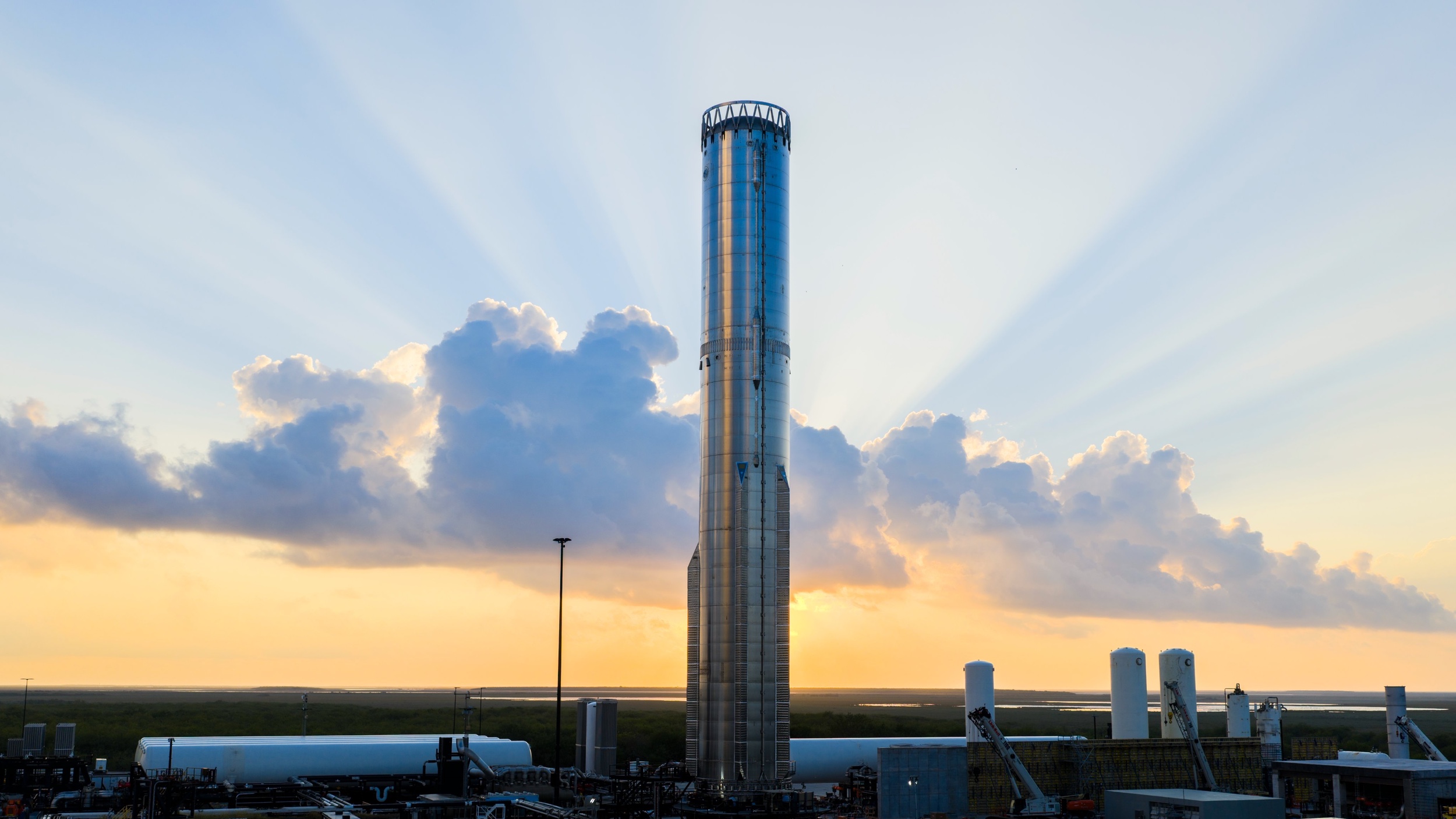
MUNICH — The first booster in the new generation of Starship vehicles suffered significant damage during a Nov. 21 test, adding to doubts about the vehicle’s development schedule.
The Super Heavy booster, designated Booster 18, was at a test site near SpaceX’s Starbase, Texas, facilities in the early morning hours when the lower section of the booster appeared to burst, according to independent video. The booster remained standing, but images taken later showed part of the structure had ruptured.
“Booster 18 suffered an anomaly during gas system pressure testing that we were conducting in advance of structural proof testing,” SpaceX said in a statement later in the day.
Unlike a June incident at the same test site, when a Starship upper stage exploded during preparations for a static-fire test, no propellant had been loaded and no engines were installed. The booster was undergoing tests to confirm it could handle pressures and loads.
The company provided no additional details, other than noting no personnel were injured. “The teams need time to investigate before we are confident of the cause,” it said.
Booster 18 is the first Super Heavy built for version 3 of Starship. Changes from version 2 include an upgraded fuel transfer line similar in size to a Falcon 9 booster, an integrated hot-staging ring that remains attached to the top of the booster, the use of three instead of four grid fins for reentry and upgraded Raptor engines.
Those upgrades, alongside improvements to Starship’s upper stage, are essential to SpaceX’s plans to bring the vehicle into service for launching larger Starlink satellites and supporting NASA’s Artemis lunar lander program.
Before the anomaly, the company was optimistic it would begin launching version 3 soon. “We’re now super-focused on the version 3 rocket that will launch early next year,” Kiko Dontchev, vice president of launch at SpaceX, said at the Economist Space Summit on Nov. 5. “That’s really going to be our production rocket.”
Multiple Starship V3 vehicles were in production, he said then, with a booster heading to the pad “in days to weeks” for testing. “I’m very hopeful we’re going to fly early next year, maybe as early as January.”
He acknowledged that Starship remains a development vehicle with a “nontraditional approach” to testing. “As long as we fail in a way that never hurts anyone or has an issue where it drastically sets us back, it’s OK to learn through testing,” he said. All 11 integrated Starship/Super Heavy flights “have been iterative successes in the sense that we’ve learned a ton.”
The incident could increase pressure on NASA to revise its Artemis lunar landing plans. SpaceX is under contract to provide a Starship-based lunar lander for Artemis 3, officially scheduled for 2027. Even before this setback, it was clear the company was significantly behind schedule, potentially by years.
NASA Acting Administrator Sean Duffy announced Oct. 20 he would “open up” the Artemis 3 lander contract, requesting acceleration plans from both SpaceX and Blue Origin, which holds a lander contract for Artemis 5.
SpaceX said Oct. 30 it had offered NASA a “simplified” architecture for Artemis 3 that could accelerate the schedule, but it released no technical details. The company argued that Starship, despite delays, remained the fastest way to return humans to the lunar surface.
SpaceX said its next major milestones for Starship V3 include placing one ship in orbit for extended testing, followed by launching another to dock with it and demonstrate in-space propellant transfer, an essential technology for the overall Starship architecture.
“The exact timing will be driven by how upcoming flight tests debuting the new Starship V3 architecture progress, but both of these tests are targeted to take place in 2026,” the company said then.
